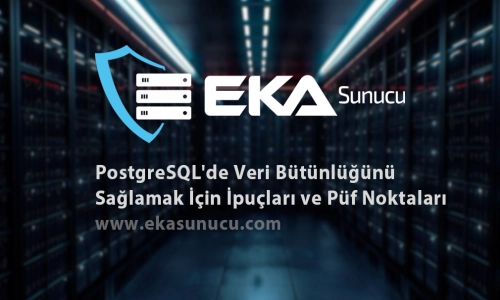
Tips and Tricks for Ensuring Data Integrity in PostgreSQL
PostgreSQL, an open-source relational database management system, is widely used for its reliability and robust features in data storage and management. Data integrity is crucial for any database application. Ensuring data integrity in PostgreSQL involves employing various tips and tricks to maintain data accuracy and ensure reliable results. In this article, we'll discuss some essential tips and tricks for ensuring data integrity in PostgreSQL.
- Use Correct Data Types and Constraints:
PostgreSQL offers a variety of tools, including different data types and constraints, to maintain data integrity. Choosing the appropriate data types and applying suitable constraints helps in preserving data integrity. For example, you can use foreign key constraints to establish correct relationships among data types.
- Implement Comprehensive Data Validation:
Implementing comprehensive data validation during data entry is a vital part of ensuring data integrity. PostgreSQL provides various tools such as unique constraints, null constraints, and check constraints to enforce data validation. These tools help in preventing invalid data from being inserted into the database.
- Maintain Data Integrity During Transactions:
Various techniques can be employed in PostgreSQL to maintain data integrity during transactions. Using transaction blocks to group multiple operations together helps in preserving integrity during data modifications. Additionally, determining appropriate isolation levels and utilizing locking strategies correctly contribute to maintaining data integrity.
- Develop Backup and Restore Strategies:
Regular backup and restore operations are essential for preventing data loss and maintaining data integrity. PostgreSQL provides tools like pg_dump and pg_restore for performing backup and restore operations efficiently. Considering continuous backup and restore strategies adds an extra layer of protection to data integrity.
- Monitor Data Integrity with Monitoring and Alerting:
Regularly monitoring data integrity using monitoring and alerting systems is crucial. PostgreSQL offers various tools and extensions for monitoring log files, analyzing statistics, and generating alerts. By utilizing these tools, potential issues can be identified promptly, and necessary actions can be taken to maintain data integrity.
Conclusion:
Ensuring data integrity in PostgreSQL is a critical process for preserving data accuracy and reliability. Using correct data types and constraints, implementing comprehensive data validation, maintaining integrity during transactions, developing backup and restore strategies, and monitoring data integrity with monitoring and alerting systems are essential tips and tricks for ensuring data integrity in PostgreSQL. By applying these tips and tricks, you can preserve data integrity and establish a reliable database environment in PostgreSQL.
 Turkey (Türkçe)
Turkey (Türkçe) Germany (German)
Germany (German) Worldwide (English)
Worldwide (English)




Yorumlar